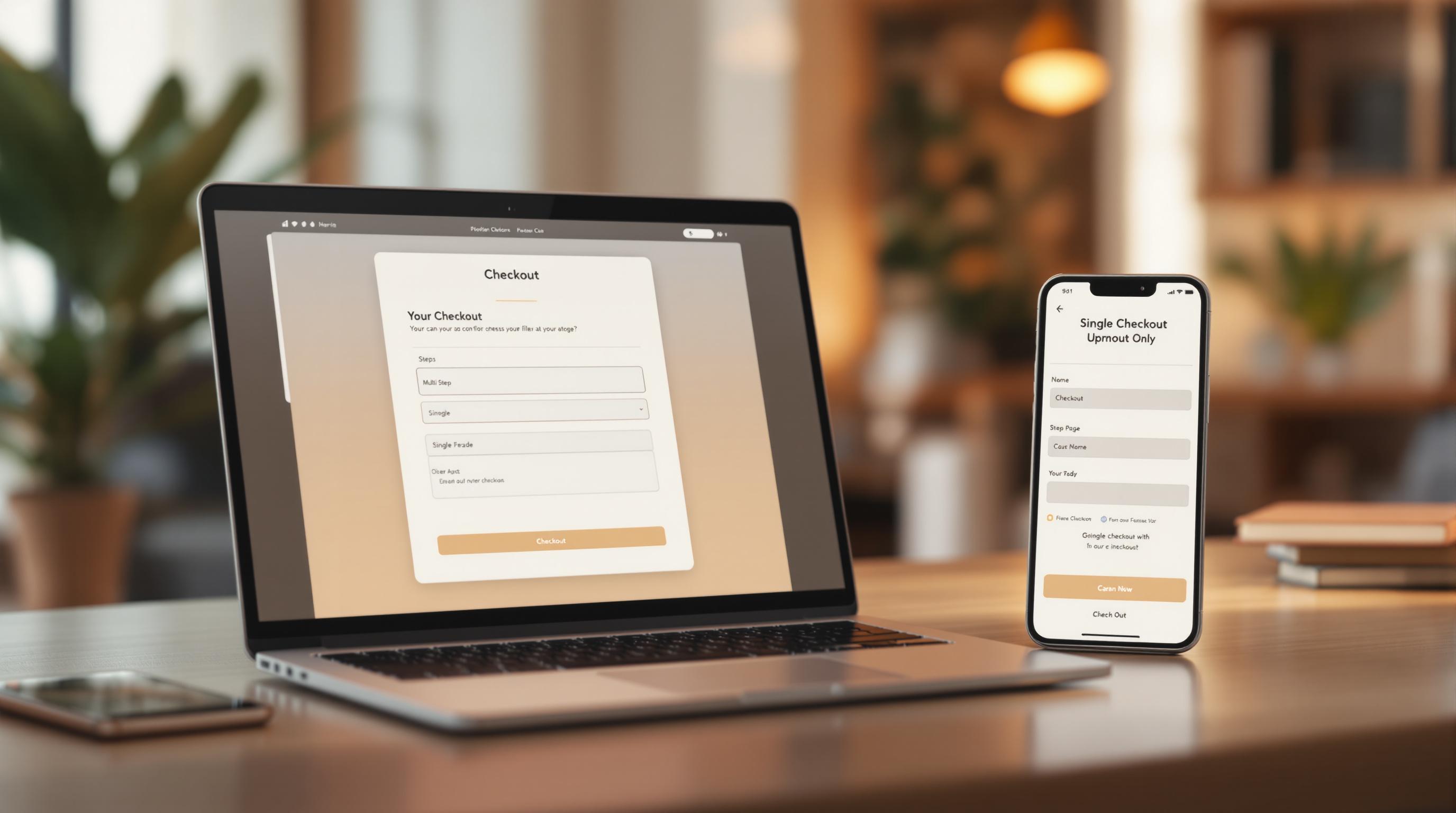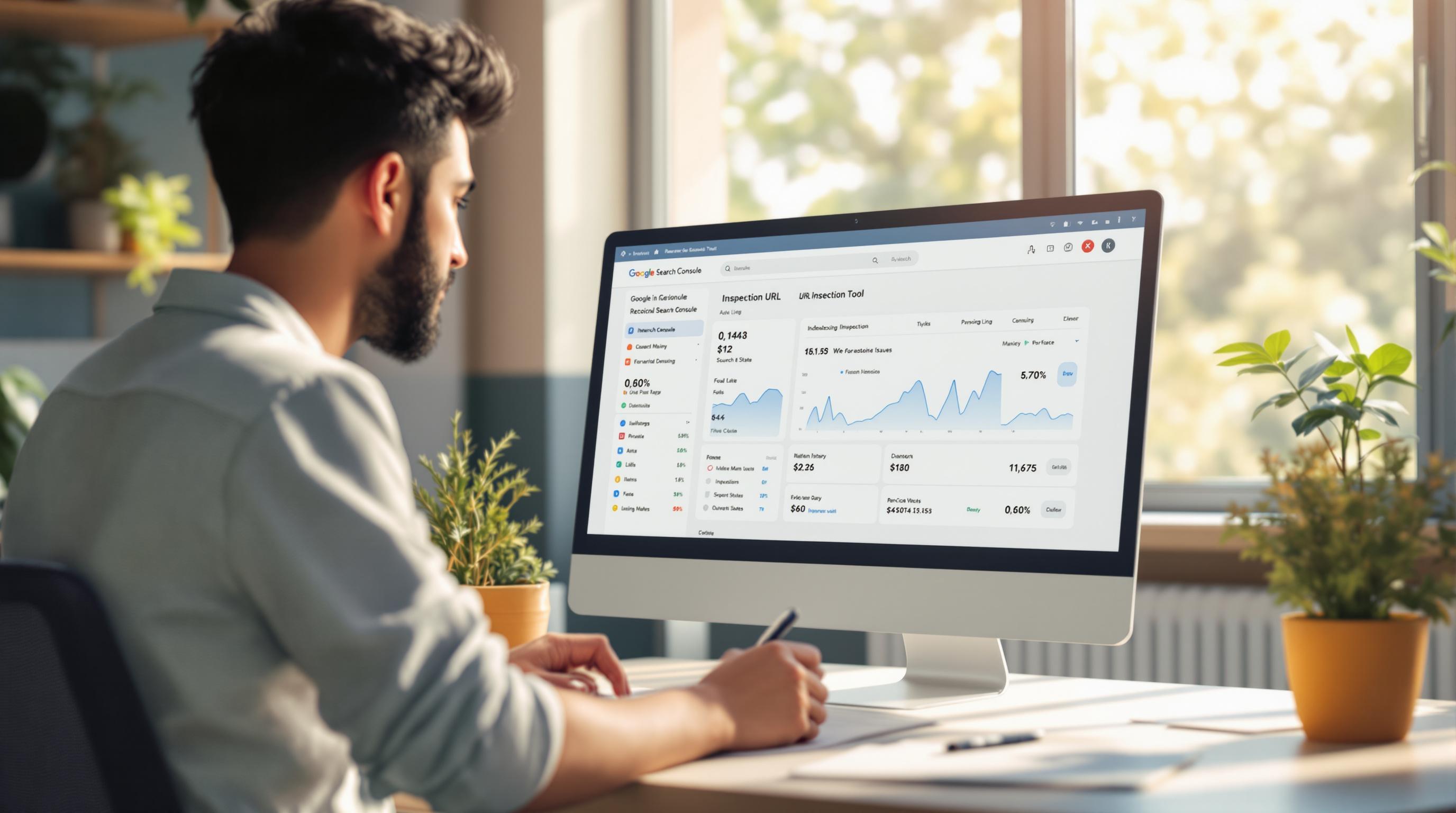In 2025, local SEO is more important than ever, with nearly half of Google searches having a local focus. To stand out, businesses need to optimize their online presence. Here's a quick guide to get started:
- Google Business Profile (GBP): Claim, verify, and fully optimize your profile with accurate details, high-quality photos, and AI-powered tools like instant messaging and AR/VR features.
- Local Keywords: Use tools to find location-specific keywords (e.g., "dentist in Boston") and integrate them naturally into your website's titles, headers, and content.
- Consistent Listings: Ensure your NAP (Name, Address, Phone) details are consistent across all directories and use tools like BrightLocal to manage citations.
- Backlinks & Reviews: Build local backlinks through partnerships and events, and actively manage customer reviews by responding to both positive and negative feedback.
- Technical SEO: Make your website mobile-friendly, fast-loading, and optimized with structured data (e.g., LocalBusiness schema).
Google Business Profile SEO: Rank #1 in 2025

1. Optimize Google Business Profile
Your Google Business Profile (GBP) is a key player in boosting your local SEO for 2025. With its advanced tools and AI-powered features, a well-maintained GBP can enhance your visibility in local searches and on Google Maps.
Claim and Verify Your Profile
The first step is to claim and verify your profile. This gives you full control over your business listing. Verification can be done through postcard, phone, or email.
Fill Out Every Detail
Make sure your profile is complete and accurate. Pay close attention to:
- NAP Consistency: Your Name, Address, and Phone number should match everywhere online.
- Photos: Upload high-quality images that represent your business.
- Categories: Choose the most relevant categories for your business.
- Business Hours: Include regular and holiday hours to avoid confusion.
- Description: Write a detailed, keyword-rich description that highlights your services and includes local terms.
"A well-maintained Google Business Profile drives traffic, leads, and sales." - Miriam Ellis, Search Engine Land [4]
Leverage Advanced Features
Google Business Profile in 2025 offers tools that can give your business an edge:
AI-Powered Insights
- Analyze customer behavior with predictive analytics.
- Use automated suggestions to respond to customer queries.
- Gain insights into local competitors.
Real-Time Interaction
- Enable instant messaging for quick customer communication.
- Update inventory and host live Q&A sessions directly on your profile.
Interactive Features
- Add AR/VR tours to showcase your space.
- Use interactive menus or localized AR ads to engage your audience.
Once your profile is optimized, the next step is aligning your website content with local search intent to maximize your SEO efforts.
2. Optimize for Local Keywords
In 2025, fine-tuning your website for local keywords remains a key strategy for businesses looking to stand out in local search results. Using location-specific terms effectively can help attract nearby customers and boost your online presence.
Research Local Keywords
Tools like SEMrush, BrightLocal, and Google Keyword Planner are great for finding location-based keywords with good search volume and reasonable competition.
Here’s a breakdown of keyword types to focus on:
| Keyword Type | Example | Best For |
|---|---|---|
| City + Service | "dentist in Boston" | Homepage |
| Neighborhood + Service | "Brooklyn pizza delivery" | Landing Pages |
| "Near me" Variations | "coffee shops near me" | Meta Descriptions |
Update Website Content
Once you’ve identified your keywords, weave them into your website content naturally. Here’s how to do it:
- Page Titles: Include your city and service (e.g., "Affordable Plumbing Services in Chicago").
- Meta Descriptions: Add location-specific terms to improve click-through rates.
- Headers (H1, H2): Use local keywords to structure your content.
- Main Content: Place keywords in a way that feels natural and flows well.
Create Local Blog Posts
Adding blog content with a local angle can further strengthen your presence. Consider writing about:
- Community events and initiatives your business supports.
- Updates about your business, like new services or milestones.
- Guides tailored to your area, such as "Best Hiking Trails in Denver."
Use tools like BrightLocal to spot trending local topics and spark ideas for blog posts. Regularly updating your blog with relevant, location-based content not only helps with SEO but also keeps your audience engaged.
Once your local keywords are in place, the next step is ensuring your business details are accurate and consistent across all local directories and listings.
3. Manage Local Listings and Citations
Having accurate and consistent business listings is a must for boosting your local SEO. When your information matches across platforms, search engines are more likely to trust it, improving your chances of showing up in local search results.
Keep NAP Information Consistent
Your business's Name, Address, and Phone number (NAP) should be identical everywhere it appears. Even small differences - like using "123 Main St." on one site and "123 Main Street" on another - can confuse search engines and hurt your rankings. Here's a quick guide to keeping it all aligned:
| Platform Type | Essential Information | Additional Details |
|---|---|---|
| Primary Listings | Name, Address, Phone | Hours, Website URL |
| Review Sites | NAP + Categories | Photos, Services |
| Industry Directories | NAP + Description | Certifications |
Use Citation Tools
Tools like BrightLocal and Whitespark can make your life easier by automating updates and keeping your business info consistent across platforms. They also help by spotting duplicate listings and tracking your performance, saving you time and effort.
List in Industry Directories
Getting listed in industry-specific directories can give your local SEO a real boost. These directories often attract high-intent users looking for specific services. Choose directories that:
- Regularly verify and update their listings
- Are well-moderated
- Have a solid reputation
- Appear in local search results
Examples of top directories include:
- Healthcare: Healthgrades, RateMDs – Great for building trust
- Restaurants: OpenTable, Zagat – Perfect for increasing visibility
- Home Services: HomeAdvisor, Angi – Ideal for driving leads
Perform regular audits to catch and fix any inconsistencies in your listings. Once your NAP is consistent everywhere, you can shift your focus to building credibility through local backlinks and positive customer reviews.
sbb-itb-d7fe25c
4. Build Local Backlinks and Manage Reviews
Backlinks and reviews play a key role in showing search engines that your business is credible and relevant in local search results.
Earn Local Backlinks
Getting quality backlinks from trusted local sources can give your local SEO a boost. Here are some ways to secure these links:
| Backlink Strategy | How to Do It | Benefits |
|---|---|---|
| Local Event Sponsorships | Sponsor events or charities in your area | Links from event websites and local news coverage |
| Business Partnerships | Collaborate with nearby businesses | Shared backlinks and better local exposure |
| Community Involvement | Join local business groups | Directory listings and features for members |
Get More Customer Reviews
Reviews not only influence potential customers but also help with local SEO. Try these methods:
- Share direct review links through email or QR codes.
- Train your team to politely ask happy customers for reviews.
Engage With Reviews
Replying to reviews shows both customers and search engines that you’re actively managing your online presence. Here’s how to handle reviews:
For positive reviews:
- Express gratitude and mention something specific about their feedback.
- Encourage them to visit again.
For negative reviews:
- Respond quickly and stay professional.
- Address their concerns directly and offer to resolve the issue offline.
- Follow up to ensure the problem is resolved.
Tools like BrightLocal and Whitespark can help you keep track of backlinks, monitor reviews, and find new opportunities.
"Customer reviews are crucial for local SEO as they improve visibility and trust. Businesses can maximize their impact by encouraging reviews, responding to all feedback, and ensuring that reviews are authentic and comply with Google's guidelines." [2]
Once you’ve built a solid local backlink profile and have a handle on reviews, it’s time to focus on optimizing your website’s technical aspects to better support local search.
5. Implement Technical SEO for Local
After optimizing your Google Business Profile (GBP) and aligning your content with local keywords, technical SEO ensures your website supports these efforts. This means making your site fast, mobile-friendly, and easy for search engines to understand.
Ensure Mobile Compatibility
Your website should work smoothly on all devices. Here’s how to make it happen:
| Mobile Optimization Element | Steps to Take | Impact on Local SEO |
|---|---|---|
| Responsive Design | Use flexible layouts and touch-friendly elements | Boosts engagement and lowers bounce rates |
| Load Performance | Optimize images and reduce unnecessary code | Improves rankings in mobile searches |
| User Experience | Add clear navigation and calls-to-action (CTAs) | Helps increase conversion rates |
Use Google's Mobile-Friendly Test to spot and fix any mobile-related issues.
Improve Website Speed
Speed matters, especially on mobile. Focus on these key areas:
- Optimize images and clean up your code.
- Enable browser caching for faster repeat visits.
- Compress static files to reduce load times.
- Aim for pages to load in under 3 seconds on mobile.
Add Structured Data
Schema markup helps search engines understand your business better, which can boost your local visibility. Here are some important types to consider:
| Schema Type | What It Does |
|---|---|
| LocalBusiness | Shares your business name, address, and phone number (NAP) |
| OpeningHours | Lists your business hours |
| GeoCoordinates | Pinpoints your exact location |
If you operate in multiple locations, create separate pages for each one, including unique schema markup and tailored content.
"Technical SEO is a foundational element of local SEO, ensuring that a website is crawlable, indexable, and provides a good user experience. It complements other local SEO efforts by providing a solid technical foundation that supports these efforts." [1]
Additional Tools and Resources
Local SEO tools can make managing your online presence simpler and help you see measurable results in 2025. Here's how you can take advantage of these resources.
Use Local SEO Tools
Platforms like BrightLocal and Whitespark offer features designed to optimize your local presence:
| Feature | Purpose | Result |
|---|---|---|
| Citation Management | Keeps NAP (Name, Address, Phone) details consistent | Improves accuracy in local searches |
| Performance Tracking | Tracks shifts in rankings | Helps make informed, data-based decisions |
| Schema Optimization | Improves how search engines display your business | Increases visibility in local search results |
Engage on Social Media
Share location-specific content to connect with your audience. Use local hashtags and post community updates to enhance your SEO efforts. This approach not only boosts engagement but also drives targeted traffic to your site, improving rankings for local keywords.
Track Performance Metrics
Tools like Google Analytics can help you monitor performance and refine your strategy. Focus on these metrics:
| Metric | What to Monitor | Why It’s Important |
|---|---|---|
| Local Keyword Performance | Rankings and visitor behavior | Helps fine-tune targeting and strategies |
| Conversion Rates | Actions taken by local visitors | Shows how effective your local efforts are |
Conclusion
This checklist covers the key steps to excel in local SEO for 2025, but the real challenge lies in putting these strategies into action and maintaining them over time. With nearly half of Google searches now focused on local intent, optimizing for local SEO is more important than ever for businesses.
A successful local SEO plan involves multiple components working together. An optimized Google Business Profile (GBP) is still a cornerstone, especially as AI and AR/VR tools continue to improve how businesses connect with customers [2]. From GBP optimization to technical SEO, each element contributes to increasing your local visibility and engaging potential customers.
Mobile optimization and fast-loading websites are crucial for ranking well in local searches. Structured data helps search engines better understand your business, giving you an edge in local visibility [1]. Publishing and refining local content is equally important, while keeping your NAP (Name, Address, Phone number) details consistent sends strong trust signals to search engines [3].
Make an impact in your community by managing reviews, keeping your listings accurate, and building local backlinks. Tools like BrightLocal and Whitespark can help you handle citations and track your performance effectively [1]. Technical SEO steps like mobile optimization and structured data go hand-in-hand with efforts like review management and backlink building to create a solid local presence.
To keep your local SEO efforts effective, regular tracking and adjustments are necessary. Monitor key metrics and stay informed about the latest trends in local SEO to remain competitive [2][3]. By staying focused and committed to these proven strategies, your business can stand out in the crowded digital space.
FAQs
What is the best local SEO tool?
Some of the top tools for local SEO in 2025 include Google Business Profile for optimizing your basic online presence, Semrush Local for managing multiple aspects of your strategy, BrightLocal for building citations (mentioned earlier in the Tools section), and SE Ranking for detailed analytics. Each tool caters to specific needs, helping you fine-tune your local SEO efforts.
How can local businesses build high-quality backlinks?
Building strong local backlinks involves a mix of engaging with your community and smart digital tactics:
| Strategy | Tips for Implementation |
|---|---|
| Local Partnerships | Collaborate with chambers of commerce or business groups |
| Community Events | Sponsor local teams, host workshops, or plan events |
| Content Creation | Write guides or resources focused on your area |
| Media Outreach | Connect with local publications and journalists |
| Competitor Research | Use tools like Ahrefs to find link opportunities |
Instead of chasing a high number of backlinks, focus on earning links from websites that are both authoritative and relevant to your community. Craft content that speaks to local concerns or showcases your involvement in the area to naturally draw quality links. Tools like SEOSpace or Moz can help you keep track of your backlink profile and its alignment with your local market.
These FAQs tackle common local SEO challenges, but following a complete strategy ensures you're set for success in 2025.


